Mauve, red, and blue
William Perkin and the dawn of the chemical industry
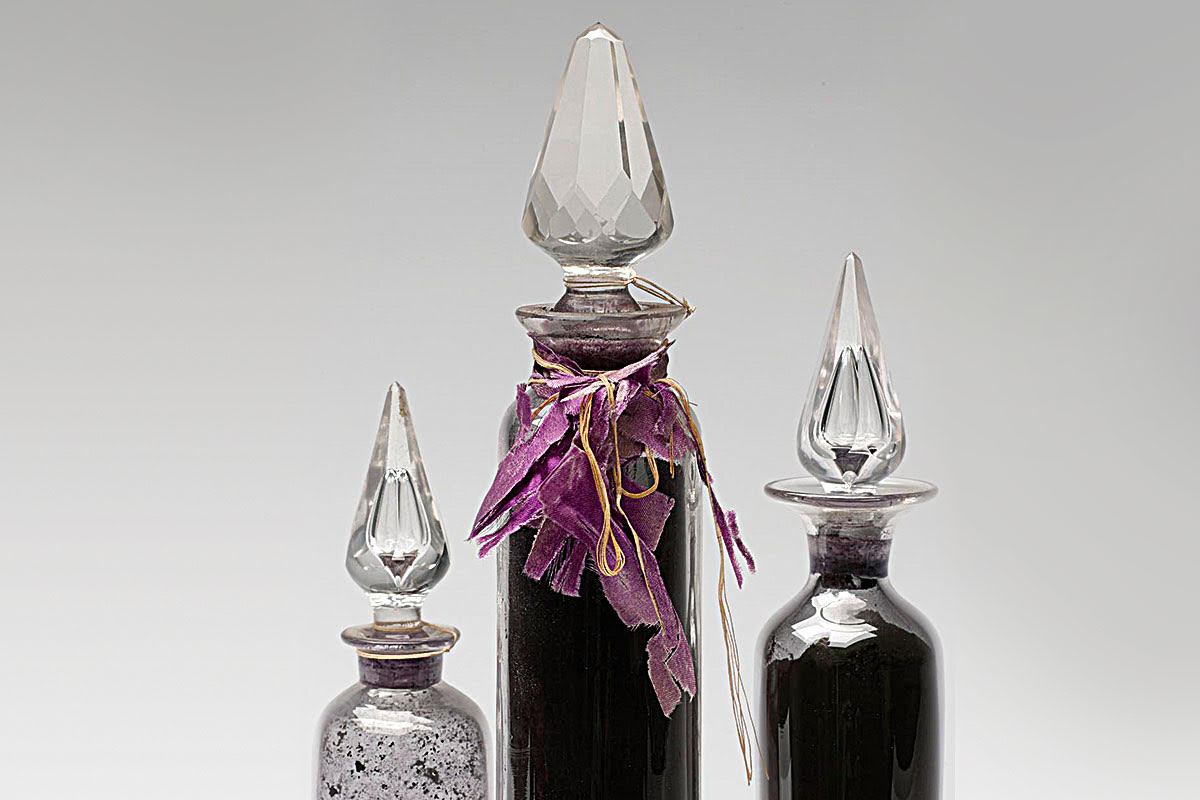
«In the fields of observation, chance favours only the prepared mind». This phrase was uttered in 1854 by Louis Pasteur, but could very well have been signed by William Henry Perkin (1838–1907), even though in Easter 1856, he was only eighteen years old and was no more than a student of the Royal College of Chemistry of London. His laboratory was a simple room on the top floor of his parents’ house in the East End. He had installed a rudimentary collection of instruments and reagents which he worked in his free time. It might not seem like much, but, with those humble weapons and the ingenuity of youth as his only guarantee, he was about to make one of the most important scientific discoveries of the time.
«In 1856, Perkin came across a compound that could provide a particularly significant shade: Tyrian purple»
His goal was very ambitious: synthesising quinine. The director of his institute, the German chemist August Wilhelm von Hofmann, had fantasised in class about producing this essential antimalarial that would help expand the British Empire using coal tar, a very abundant waste at the time because it originated in the production of gas for lighting. So there he was, in his role as an outstanding student, taking his assignments home with no other prize than to obtain a dark paste with no trace of the drug. But he would not give up, which was the first of his many virtues. He would have the perseverance to dissolve the mixture in ethyl alcohol and patiently manipulate it until he discovered that it dyed the silk cloth violet (Garfield, 2001).
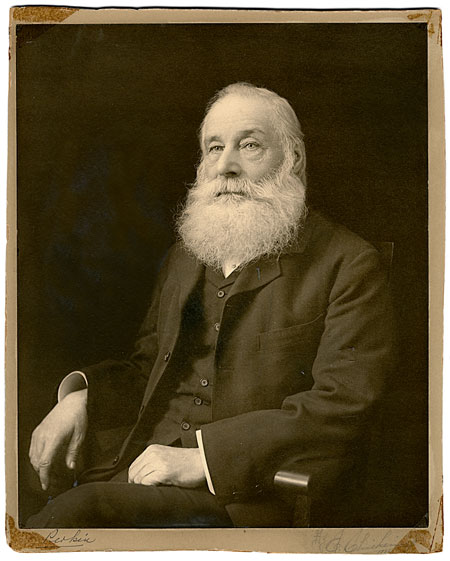
William Perkin is considered the father of the synthetic chemical industry. Perkin’s mauveine was the first commercially available mass-produced dye and paved the way for other synthetic dyes. In the image, the English chemist, in a 1906 portrait / Courtesy of Science History Institute
This was not an ordinary finding. During their long history, human beings had depended on natural dyes to brighten up their garments. The best of them, those that make clothes colourful and resistant to washing, were enormously expensive and therefore a source of profit. Perkin, moreover, had come across a compound that could provide a particularly significant shade: Tyrian purple, one of the most important symbols of greatness in the ancient world.
It was discovered by the Phoenicians, who made it one of their greatest sources of wealth, and this pigment was always associated with opulence and power. A connection that would reach its zenith in Roman times, because its use was forbidden in the fourth century to anyone who did not belong to the Cesar household. The ultimate cause of this connection was its high price, which surpassed gold. This was because of its unique origin: different marine snails of the genus Murex. Each one of these molluscs contains a minimal quantity of a greenish and easily washable substance in its mucous glands that turns into an intense and indelible purple when left to oxidise in the air. Therefore, thousands of these invertebrates were required to dye a single piece of clothing, not to mention the intricacies of an elaboration process that was kept so secret that it did not survive the fall of the Byzantine Empire (Woolmer, 2018).
But these old stories only added to a discovery that might have remained a mere curiosity, a striking result to discuss with colleagues before moving on to something else. But Perkin was not only remarkable for his tenacity. He also had an unusual intuition to grasp the possibilities arising from his work and the audacity to put them into practice. Let us follow the sequence of events to prove it (Garfield, 2001).
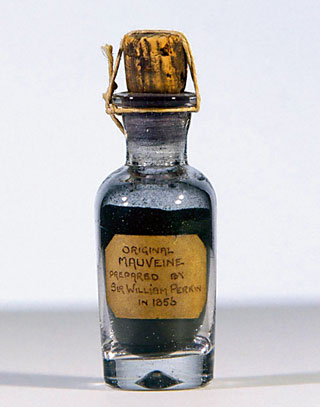
Mauveine dye bottle labelled: «Original Mauveine prepared by Sir William Perkin in 1856». The preparation is actually from 1906 (probably made to celebrate the anniversary of Perkin’s discovery), so the label could mean that the sample was prepared using the same method as the original 1856 dye / Imperial College of Science & Technology
Mauve measles
The first decision was to abandon his utopian experiments in pursuit of quinine and concentrate on the unexpected finding, probing its actual usefulness. To this end, and after improving the synthesis process for his mauveine, he sent a piece of dyed silk to a renowned Scottish dry cleaner’s. «If your discovery does not make the goods too expensive, it is decidedly one of the most valuable that has come out for a very long time». He would need no further encouragement. The answer fuelled the entrepreneurial spirit of the young Briton so much that he did not hesitate to give up his studies and embark on a business venture that would bring along the rest of his family. His father provided the capital needed to start the newly formed company Perkin & Sons, which his brother also joined.
And since luck favours the bold, Perkin’s entry into the dye market coincided with a fortunate circumstance that would catapult him to success. Suddenly, violet became fashionable. First, the trendsetter in Europe at the time, Empress Eugénie de Montijo, the wife of Napoleon III at the time, decided that this colour would go well with her eyes. Later, Queen Victoria would follow her example by attending the wedding of her firstborn dressed in the same colour. And, behind her, a multitude of gallant gentlemen and ladies throughout the continent, in what the spiteful London chronicles of the time described as a sudden «mauve measles».
Initially, this demand was not covered by the Perkin’s dye, but by a natural pigment extracted from a lichen known as French purple (Ball, 2004). But the discovery of our protagonist was much cheaper, and soon replaced its expensive rival. By then, moreover, young William had found a mordant that could be used on cotton, fixing it in a much more stable way. And since the Industrial Revolution was practically born in a loom, the boom in textile production led to a happy situation in which the biggest problem of the new company was being able to meet the huge number of orders received.
«Synthetic dyes proliferated within a few years. Small variations in structure causing strong changes in its colouring»
Nothing lasts forever, though, and the mauve craze ended just as quickly as it took off, although there was no turning back on synthetic dyes. Other chemists began to focus their efforts on this type of compound, which proliferated within a few years, with small variations in structure causing strong changes in its colouring. But this movement was not homogeneous, of course. The best prepared countries took the lion’s share. Among them was Germany, where by the mid-nineteenth century an unprecedented system of science education combining theory and research had been implemented. Its founder was the chemist Justus von Liebig, who – first at the University of Giessen and then at the University of Munich – trained dozens of disciples who gradually brought their methods to other institutions (Sánchez Ron, 2007).
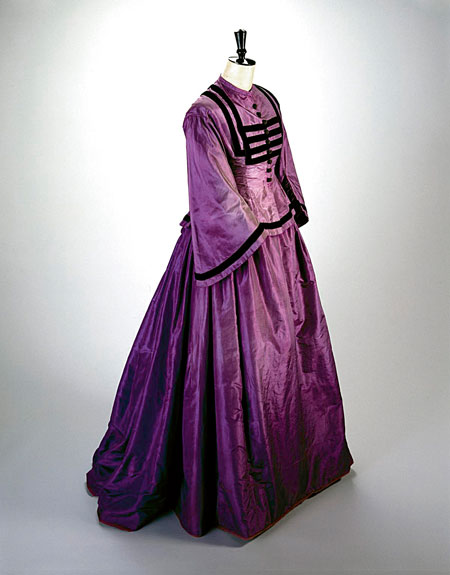
Silk skirt and blouse dyed with William Perkin’s mauve aniline dye, dated between 1862 and 1863 in England. The discovery of Perkin’s synthesis of mauve pigment coincided with the popularisation of the colour among the aristocracy and the European bourgeoisie / Science Museum Group Collection Online
This made Perkin & Sons’ situation much less comfortable, as they were forced to seek out new commercially appealing products in the face of stiff competition. Even so, young William’s drive kept the company in the game for a while, and even led to a second milestone in the dye industry. This was the synthesis of alizarin, a pigment that already existed in nature but which he was going to produce artificially for a much lower cost.
Reds
Throughout history, red had been obtained from various sources. The most precious, because it produced an intense crimson colour, was strongly linked to Spain, which had dominated its trade for centuries. It was called cochineal (Dactylopius coccus) and came from a cactus parasite domesticated in Mesoamerica. Cortés’s arrival in those lands had discovered it for Europe, which saw in the scarlet dye the symbol of distinction that it had lost with the disappearance of Tyrian purple. Therefore, after the conquest, the recently created viceroyalty government had encouraged the breeding of this species and granted a monopoly to the valley of Oaxaca, in what ended up being a tremendously beneficial decision for the indigenous people of the area. The breeding of this tiny animal required careful attention that better matched small-scale farms and this allowed workers to maintain a certain autonomy that facilitated the preservation of their languages and customs. Spain had thus monopolised the lucrative trade in this dye, a position it still held now that Mexico had become independent. As a reaction to the emancipatory uprisings in Latin America, it had introduced cochineal to the Canary Islands, where it had an advantage over its former possessions due to the absence of the insect’s natural predators (Greenfield, 2010).
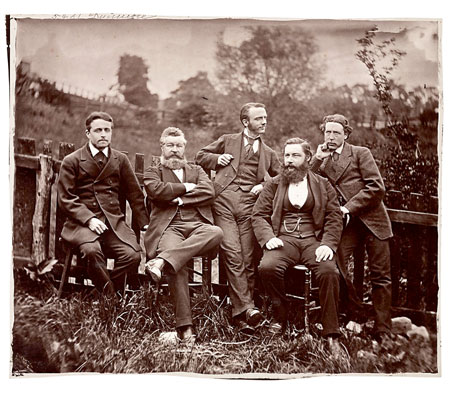
William Perkin was only eighteen when he synthesised mauve. After sounding out its usefulness and realising its commercial potential, he abandoned his studies and started Perkin & Sons, where his brother also worked, thanks to the capital contributed by his father. In the picture, group photo taken in 1870 of William Perkin (second from the right) with his laboratory assistants, including his brother Thomas Dix Perkin (second from the left). Three years later, aware that he could not compete with the fledgling German industry, he sold the company and retired to continue his research as a mere hobbyist / Science Museum Group Collection Online
However, there were other reds on the market that were less well regarded but more accessible. Among them was the aforementioned alizarin, which until 1869 could only be obtained from the root of a plant of the genus rubia (Rubia tinctorum L.). That year, however, Perkin & Sons, on the one hand, and the young German company BASF, on the other, found a method capable of synthesising it from simple chemical compounds. We are no longer talking about emulating the shade of a natural pigment, but about obtaining the exact molecule responsible for its colour. Hence the importance of this achievement, whose authorship is absolutely shared. As chance would have it, both parties presented their respective patents only one day apart, which forced them to agree on a compromise. The British company kept the exclusive rights in the UK and the German company in continental Europe and the US.
Curiously enough, this success would be young William’s swan song. Four years later, at the early age of thirty-six, he sold the company he had founded as a teenager and retired. He did so with the peace of mind of having enough capital to live comfortably until his death and the certainty of knowing that it would be increasingly difficult for him to keep up with the competition. The success of alizarin had made him aware of the reality: he was fighting at a disadvantage. The German industry had hundreds of highly trained chemists and was protected by the best patent legislation in Europe.
So while Perkin retired and returned to his early days, to a home laboratory where he could pursue science as a hobby, Germany took over a thriving dye industry whose activity was changing the lives of millions of people. Think of the Canary Islands’ cochineal breeders, who were lucky enough to find an alternative way to earn their living by growing bananas, the French rubia farmers, who were forced to find other vegetables to grow, or the hundreds of thousands of people from Bengal who were about to see indigo disappear from their fields.
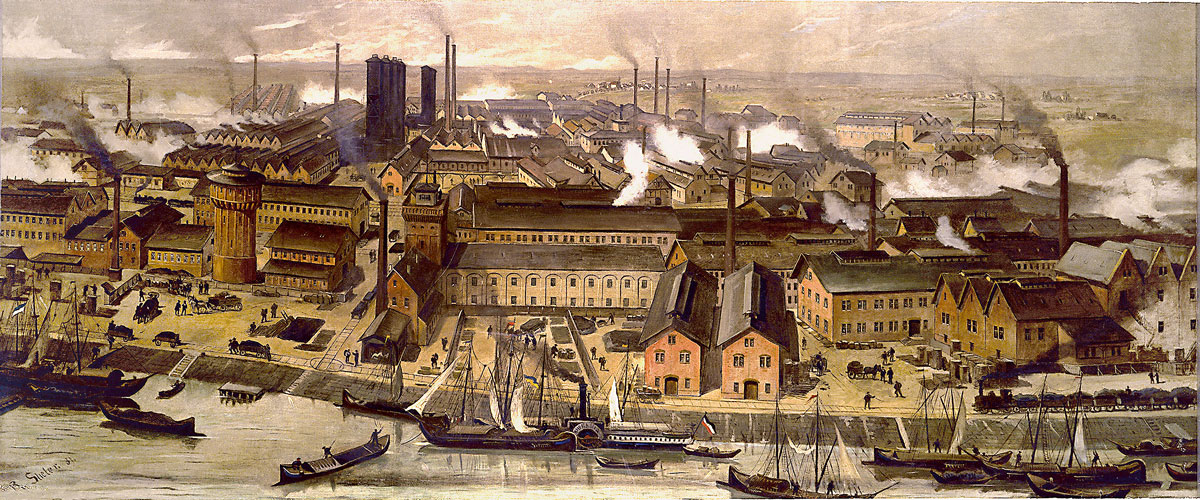
The synthetic dye industry laid the foundation for the development of the chemical industry. The same factories that emerged to produce pigments gradually diversified their activities and soon produced pharmaceuticals, plastics, fertilisers, and explosives. In the picture, a BASF factory in Ludwigshafen (Germany) in 1881. Today, BASF is one of the world’s leading chemical companies / BASF
Blue
This last case was perhaps the most dramatic, although possibly for the better. The British had set up a disastrous production system in the Raj that forced natives to plant cash crops such as indigo or opium instead of basic subsistence crops such as rice. This inevitably led to a semi-slavery regime, as they did not receive enough money to pay for their own food and were left with no choice but to get into debt and become dependent on the will of moneylenders. Famines and riots were not uncommon as a result of these practices, which, at least for indigo, did not end until there was a more affordable way to obtain it (Balfour-Paul, 2012).
The new method was again found by BASF. In 1897, the company began to sell a synthetic dye that rendered the indigo fields redundant. This was the culmination of a titanic effort, which had required an investment of eighteen million marks and almost two decades of work, but which was certainly profitable for them. This dye was used not only as the main source of blue, but also as the basis for the composition of many other shades. And although the British were reluctant to use it on the grounds that natural dye was of a superior quality – impossible, because it was the same molecule – the market prevailed and artificial dye ended up dominating.
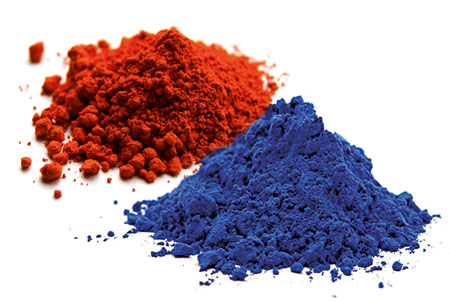
Alizarin could only be obtained from the root of rubia plants (Rubia tinctorum L.). Perkin & Sons and the German company BASF succeeded in obtaining the molecule responsible for its red colour. However, Perkin considered he could not compete with the German industry, sold his company, and retired. Three decades later, in 1897, BASF succeeded in synthesising indigo, after an investment of millions of marks and decades of work, but it was certainly profitable. Today, most of the millions of jeans manufactured annually are dyed with indigo produced by the chemical industry.
Today, an overwhelming majority of the millions of jeans manufactured annually are dyed with indigo made by the chemical industry. Imagine the alternative, the enormous amount of land that would have to be devoted to indigo to sustain such a production, and the environmental and food security costs that would entail. Furthermore, the low price of synthetic pigments has democratised colours to the point where everyone can use them as they please. In the past, the privileged classes used striking tones to emphasise their social status – there are the Modern Age portraits to prove it – but today this type of code has lost its meaning and, in fact, elegance is discretion.
Therein lies part of Perkin’s legacy, but not all of it. The dye industry was the first far-reaching business sector to be born directly from a scientific discovery. A circumstance that would prove key to making developed nations aware of the implications and start stimulating research. Universities were transformed to accommodate and train the thousands of highly qualified future technicians demanded by a constantly changing society. And chemical synthesis did not stop with dyes. The same factories that emerged to obtain pigments gradually diversified their activities, and soon started to produce drugs, plastics, fertilisers, and explosives. All of this began in a home laboratory where a simple but ambitious student was working out. As the great Albert Einstein said: «Imagination is more important than knowledge. For knowledge is limited to all we now know and understand, while imagination embraces the entire world».
References
Balfour-Paul, J. (2012). Indigo, Egyptian mummies to blue jeans. Buffalo: Firefly Books.
Ball, P. (2004). La invención del color. Madrid: Turner Publicaciones.
Garfield, S. (2001). Malva. Historia del color que cambió el mundo. Barcelona: Ediciones Península.
Greenfield, A. B. (2010). Un rojo perfecto. Valencia: Publicacions de la Universitat de València.
Sánchez Ron, J. M. (2007). El poder de la ciencia: Historia social, política y económica de la ciencia (siglos XIX y XX). Barcelona: Crítica.
Woolmer, M. (2018). La púrpura fenicia, el tinte más preciado de la Antigüedad. National Geographic, 173, 54–65.





